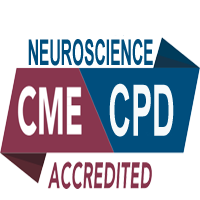Marianne stallvik
Trondheim University Hospital, Norway
Title: Assessing patients to Optimal Level of Care with the ASAM Criteria Software
Biography
Biography: Marianne stallvik
Abstract
ASAM Criteria software was studied for predictive and convergent validity by assessing patients with a substance use disorder to optimal level of care (LOC). ASAM criteria is a computer-assisted structured interview and clinical decision support programme that implements validated tools including the Addiction Severity Index, CIWA and CINA abstinence scores and measures biopsychosocial conditions to match patients to an optimal LOC. The talk will cover results from a pilot and a validation study including 261 patients. At post-test three months after treatment initiation, patients who had received matched treatment based on the ASAM recommendation reported less use of alcohol and cannabis versus undermatched patients. Overmatched patients had no better outcomes than matched patients; in some cases no change occurred or a more intensive LOC was recommended at post-test. Consistent with prior studies, the ASAM Criteria Software Norwegian version demonstrates elements of predictive validity for determining intensity of LOC placement using all three prospectively planned measures. We also studied the ability of the ASAM Criteria to clinically distinguish between the different LOC, and results lend support for the software’s convergent validity. This ability to distinguish by severity was taken further in a third paper which also examined the programme’s Dual Diagnosis taxonomy, incorporated in the second revised version to assess patients’ need for more specialised programmes for co-occurring psychiatric disorders. We aimed to study the prevalence of co-occurring disorders programme recommendations and ASAM Criteria convergent validity in terms of locating patients with co-occurring disorders and discriminating between severities among those who received more intense recommendations. The results are in line with previous research with the use of these criteria, and the different recommendations show differences in characteristics, severity and outcomes. The successful translation and software testing in Norway should encourage larger studies – preferably across nations and treatment system.

